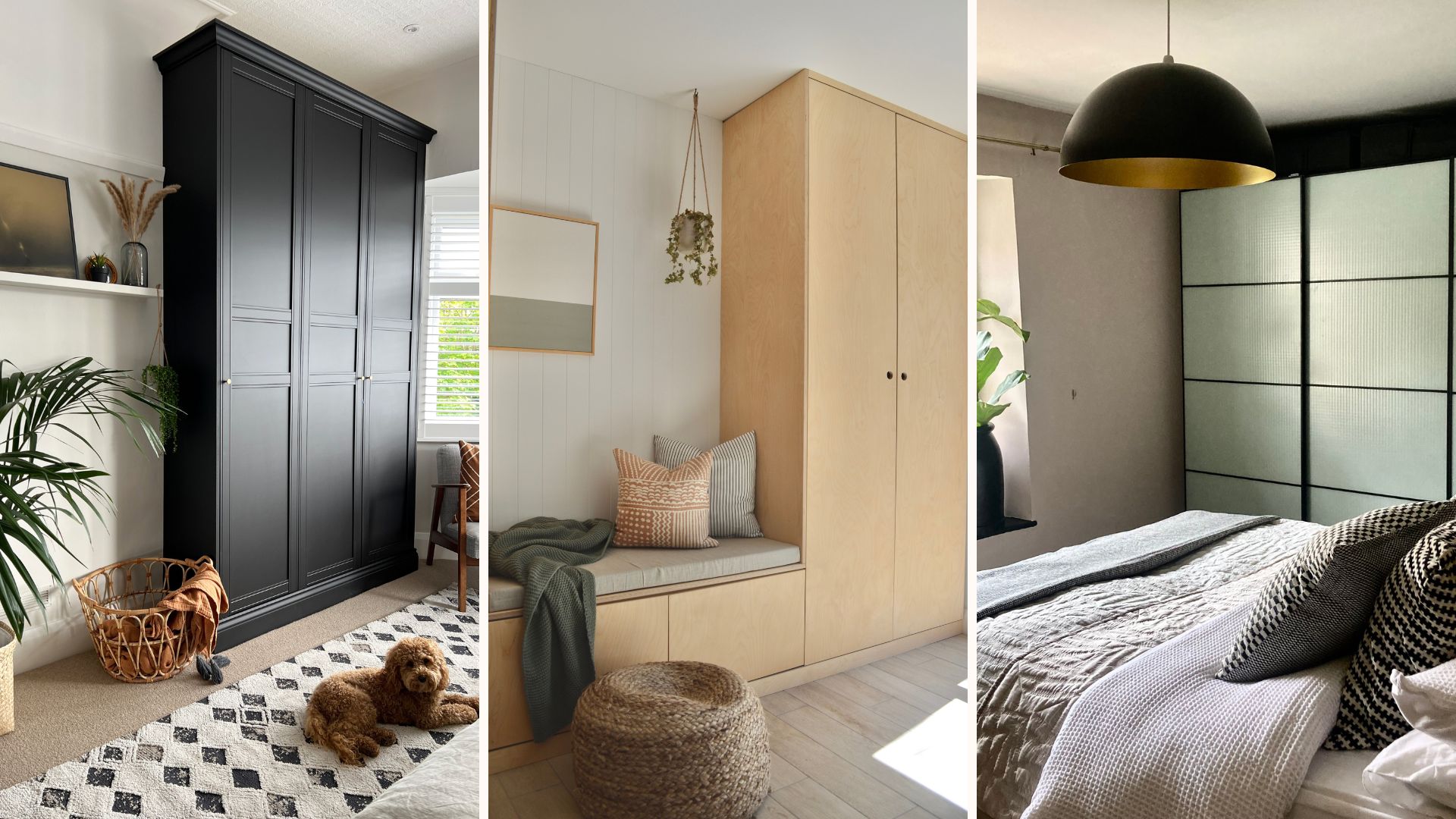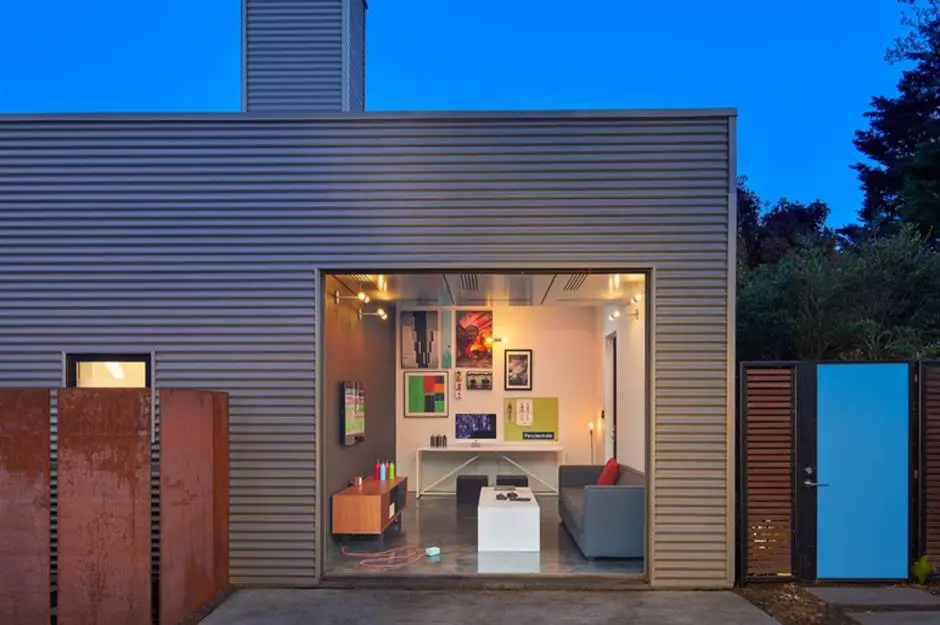Retaining walls are useful and often required landscape elements. They enable improved landscape improvements like roads, pathways, and other features and aid in supplying stability in locations with sloping terrain. Although building a retaining wall may be a challenging and costly project, there are several cost-effective solutions to complete the task. The correct materials may be used to create an inexpensive retaining wall that performs similarly to a more expensive one.
Retaining walls may be constructed out of concrete, stone, or wood, depending on your requirements. You may use a variety of materials, including pavers, cinderblocks, bricks, solid stone like granite cobblestones, and flat river rock like slate or shale. A concrete retaining wall may also have a stone or render veneer addition. Here are 18 of our favourite low-cost retaining wall designs that you can create with inexpensive materials.
Implement River Rock Veneer.
A rough and lovely veneer of rounded river rock that appears elegant and sturdy covers this concrete retaining wall.
Construct a Raised Bed
Raised beds for a garden area may also be a great use for retaining walls. The flower bed that surrounds the flagstone patio is the ideal height for this wooden retaining wall.
Make It Circular
A short retaining wall made of pavers and stone stairs constructed from bigger chunks of stone encircle this gorgeous patio built of stone pavers. The well-executed design components create an appearance that is both rustic and very elegant.
Including a Seating Area
This retaining wall has a cosy wooden seat built directly into it, making it a fantastic multipurpose building.
Design a Landscape Attraction
This solid wood retaining wall serves as both a decorative edging for the road and steps going up to the house and provides access for maintaining the modest landscaping.
Retaining wall and path must match
These white pavers contrast well with a retaining wall made of white stone blocks.
Consider a Render Wall
The word “render” refers to a concrete coating that creates a surface that repels water. Although it is conceptually very similar to plaster used on interior walls and has the appearance of smooth plaster or marble, the techniques and materials utilised are slightly different.
Build a Rock Retaining Wall for Your Garden
With the use of natural stones, this lovely retaining wall may be constructed at a very low cost. A growing wall will become more endearing over time if you add some creeping groundcovers and succulents that love to grow in crevices.
Choose some colour
This retaining wall’s two-tone appearance is achieved by using paver bricks in the beautiful, earthy tones of dark grey and reddish brown.
Create some stairs
Bristol, England’s innovative and adorable design mixes excellent craftsmanship with usefulness. A robust staircase leading to the elevated layer of this walled garden is also provided by the substantial wood retaining wall.
Attempt Two-Tone
The pathway and retaining wall are made completely of pavers, some of which were trimmed to size and carefully placed. They are both light and dark grey.
Put in a few gentle colours and curves
This low, curving retaining wall is made of stone pavers in various sizes and gently coloured forms that fit together to form a straightforward geometric design.
Brighten Up With Brick
The brick wall behind this striking orange retaining wall mirrors the brick wall in front of it. It serves as a cosy, welcoming backdrop for the stunning fairy garden design below.
Construct a Backyard Lounge
A stone fire pit is situated on a stone patio that has a modest stone paver retaining wall around it. The fence’s weathered natural wood is echoed in the stone’s grey tones.
Select earthy colours
Pavers are available in a wide range of hues and patterns, but these smooth ones in earthy brown tones provide a charming low retaining wall that blends in with the bed of tan gravel, offering excellent drainage and a stunning aesthetic feature.
Pick up Some Granite
Compared to what was formerly a decaying set of wood stairs and a wood retaining wall, these granite blocks and stair risers are a strong, tidy renovation.
simplify by streamlining
Simple bends on the pathway leading to the entryway are called for by the clean, square lines of this traditional ancient home. The modest stone paver retaining wall doubles as a bed for plants like trees and bushes.
Create a Basic Kitchen Area
A semi-circular retaining wall, a round fire pit or grill area, and convenient square tables are all features of this patio made of stone pavers.
FAQ
Q: What Advantages Do Retaining Walls Have in Landscape Design?
In every landscape, retaining walls perform practical and aesthetically pleasing functions. They are essential for reducing erosion because they hold back dirt and stop it from washing away, which is especially important in steep or sloping terrains. They may also create level areas for outdoor living, gardening, and other leisure pursuits. Retaining walls may be a striking element in any landscape design, giving your outdoor area depth, character, and structure.
Q: How Can I Build a Retaining Wall on a Shoestring Budget?
A: Retaining walls don’t have to be expensive to construct. Start by making a detailed list of your requirements. Next, think about using reasonably priced materials like pressure-treated wood, repurposed concrete, or concrete blocks. DIY projects may significantly reduce labour expenses, but it’s crucial to make sure you have the right equipment and expertise for the task. To assist you with the procedure, search online for tutorials and guidelines.
Q: What Retaining Wall Materials Are Most Economical to Use?
A: A cost-effective retaining wall may be constructed using a variety of accessible materials. Due to its accessibility, toughness, and simplicity of installation, concrete blocks or cinder blocks are often a preferred option. Another excellent choice is pressure-treated wood, particularly for smaller, less steep slopes. Gabions, which are wirework containers filled with rock or other hard materials, provide an innovative and affordable alternative. utilised bricks or cracked concrete slabs are examples of recycled materials that may be utilised to create a charming wall on a budget.
Q: What Is the Best Material to Use for My Retaining Wall?
A: The best material for your retaining wall will depend on a number of criteria. These include the amount of money you have available, the wall’s height and length, the slope and soil type, and the overall look you wish to create. The material’s durability and upkeep needs must also be taken into account. To determine which material will best fit your unique requirements, speak with a nearby landscaping specialist or do some internet study.
Q: Can I Create My Own Retaining Wall to Save Money?
A: Yes, you may save money on labour by constructing a retaining wall yourself. It’s important to appreciate the amount of effort required, however. You’ll need sophisticated tools and a solid grasp of the construction process. For DIY newbies, smaller, non-structural walls might be a terrific place to start. It is often wise to get expert advice when building bigger walls or walls that will support a heavy load in order to prevent making expensive errors or creating safety hazards.
Q: What Upkeep Is Necessary for Various Low-Cost Retaining Wall Types?
A: The materials used affect how often retaining walls need to be maintained. For instance, concrete block walls need little upkeep, but it’s crucial to regularly check for cracks. For wooden walls to be free of rot and insect damage, treatment or sealing may be necessary. In general, it’s essential to regularly check your retaining wall for any indications of deterioration or instability in order to avoid serious problems and prolong its lifespan.
Q: How Can I Include a Retaining Wall in the Design of My Garden Without Going Over Budget?
A: Your landscape design may benefit from a retaining wall without breaking the bank. Consider building the wall out of inexpensive materials and integrating it into a tiered garden design. The wall may be made to integrate into the environment more organically by planting within and around it. By adding a seat or a water feature, you might utilise it to become your garden’s centre point. Remember that even a cheap wall may substantially enhance the appearance and practicality of your garden.
Q: What Safety Measures Should I Take When Constructing a Cost-Effective Retaining Wall?
A: Safety should come first when constructing a retaining wall. Make sure the wall is sound structurally and won’t crumble under strain; this is crucial for walls higher than 3 feet. Wear the proper safety equipment, such as gloves, goggles, and sturdy shoes. Avoid overworking yourself or lifting more weight than you can handle. Make sure you are acquainted with how power tools and large equipment should be used safely before using them.
Q: What Common Errors Should Be Avoided When Building a Cheap Retaining Wall?
A: Underestimating the quantity of material required, neglecting to guarantee correct drainage, and improperly preparing the foundation are all common errors made while building a low-cost retaining wall. These may result in the collapse of the wall and future expenses. Additionally, choose the cheapest materials without taking into account their durability and the types of weather and soil they must survive is a mistake.
Q: How Can I Make My Cheap Retaining Wall Look More Beautiful?
A: There are several methods to improve your inexpensive retaining wall’s visual appeal. Think of staining or painting the wall a colour that goes well with your scenery. Planting flowers or vines may soften the appearance of the wall and provide a touch of nature. Another suggestion is to include architectural features like a built-in seat or lighting fixtures. Even a retaining wall on a tight budget may be turned into a decorative element in your garden with a little imagination.
Q: Can I Use Recycled Materials for Building a Retaining Wall?
A: Unquestionably, using recycled materials to create a retaining wall might be a smart choice. You may create a distinctive and green wall with scrap bricks, broken concrete, or even big boulders. Utilising repurposed materials may give your landscape a rustic and character-filled look while also saving money and reducing trash.
Q: How Can I Make My Economical Retaining Wall Last Longer?
A: Regular maintenance is crucial if you want to increase the lifetime of your affordable retaining wall. This can include checking for damage, making sure there is enough drainage to avoid water accumulation, and swiftly fixing any cracks or openings. If you used wood, you may want to seal it to prevent decay and insects. Even an inexpensive retaining wall may survive for many years with the right maintenance.
Q: What Are Some Innovative Options for Creating a Cost-Effective Retaining Wall?”
A: Designing a cost-effective retaining wall may be done in a variety of inventive ways. Think of combining several materials for an eclectic appearance or arranging the pieces in a distinctive manner. Steps or a built-in bench might be included to increase utility and appeal. Consider building a moss wall for a lush, green appearance if the wall is in a shaded region. Think beyond the box and let your own sense of style shine through on the wall.
Q: How Can I Increase My Retaining Wall’s Functionality Without Going Over Budget?
A: Consider its dual use when designing your retaining wall to get the most out of it. Can it serve as seats for an outdoor living space, for example? Can you use it to build a tiered garden where you can grow veggies and herbs? Even inexpensive materials may be utilised to build a wall that is useful and beautiful, raising the value and appeal of your outdoor area.
Q: What Are Some Effective Landscaping Techniques Surrounding a Cheap Retaining Wall?”
A: Through careful planting and design, a low-cost retaining wall may be landscaped. To soften the appearance of the wall and help it integrate into the surroundings, use ground cover plants. At the top of the wall, plant flowers or bushes to provide height and interest. If there is room, make a walkway that runs along the base of the wall and leads to a seat or other garden item. These techniques might aid in integrating your retaining wall into your landscaping design.













